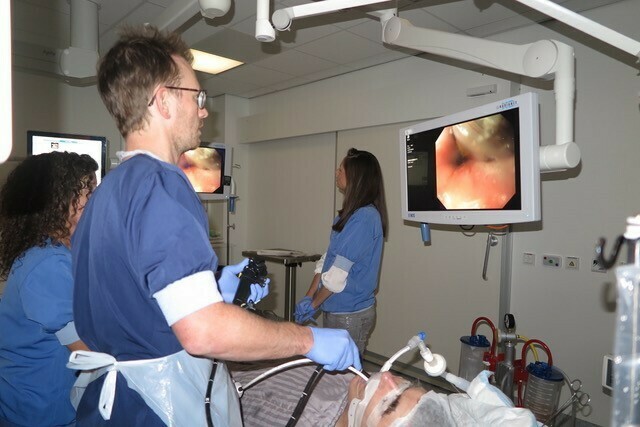RFA

Patients who have Barrett's oesophagus have an increased risk of developing malignancies. For this reason, close follow up is required for these patients, with tissue sample collection and testing. Sometimes, when an abnormal area is seen on an oesophageal test, an EMR or ESD is taken. For the majority of cases, the patient's cancer will be cured.
That said, Barrett tissue can never be removed completely with this technique - and people who have had a prior malignancy in the Barrett must have it removed completely.
To accomplish this, a Radiofrequency Ablation (RFA) is performed. This device is placed against the Barrett’s mucosa and then heated to a high temperature, which subsequently destroys the Barrett tissue.
Several treatments are often required to clear the entire oesophagus of Barrett.
This treatment can only be performed in approximately seen Flemish hospitals and is strictly regulated to guarantee the quality of the procedure. Maria Middelares General Hospital is one of these hospitals.
The possible disadvantages of the RFA treatment are temporary pain in the breastbone or temporary difficulties with eating food (since the oesophagus rebuilds itself in the spot where it was ‘heated up’, and this makes it harder to swallow food). The symptoms involving swallowing issues will usually resolve spontaneously. It may be necessary, however, to stretch the oesophagus.
Centres and specialist areas
Centres and specialist areas
Something wrong or unclear on this page? Report it.
Latest publication date: 13/08/2024
Supervising author: Dr Monsaert Els




